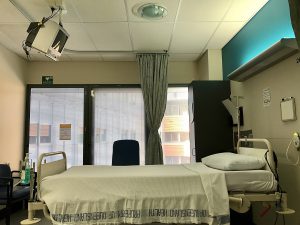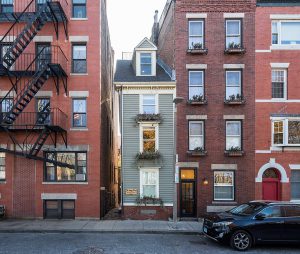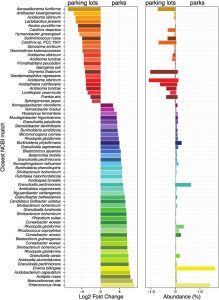Very nice and cleanly done study here, “Air and Environmental Contamination Caused by COVID-19 Patients: a Multi-Center Study” is a very straightforward look at the spread of SARS-CoV-2 in a healthcare setting… without aerosol generating procedures being part of the pictures. They looked at the air (all negative) and a bunch of surfaces (27% positive …
I missed blogging about this important preprint when it came out for some reason. “Viable SARS-CoV-2 in the air of a hospital room with COVID-19 patients“. I’ve talked in the past about how many of the environmental sampling studies come out are only looking at SARS-CoV-2 RNA and not viable virus. Here’s a nice …
So this one is from back in June, I had been meaning to check it out but was just reminded today on Twitter by Bastien Chevreux. “SARS-CoV-2 in environmental samples of quarantined households” is a fairly straightforward application of environmental surveillance to a household. Virtually every other monitoring study I’ve seen (wastewater aside) has been …
This article (“Collection of SARS-CoV-2 Virus from the Air of a Clinic within a University Student Health Care Center and Analyses of the Viral Genomic Sequence”) caught my attention initially because of the air sampling aspect, but upon reading the Abstract I was struck by something else. Here they did air sampling in a …
(h/t to Linsey Marr for posting this on Twitter) Another, more comprehensive, environmental sampling survey for SARS-CoV-2 from a hospital… this time in Wuhan, China. “Aerosol and Surface Distribution of Severe Acute Respiratory Syndrome Coronavirus 2 in Hospital Wards, Wuhan, China, 2020“. The authors here did air as well as surface sampling. Again, only RNA …
(h/t to Patrick Horve for this article) Definitely seeing a theme here these days. People are swabbing hospitals and finding the SARS-CoV-2 virus pretty much all over the place. This article “Detection of Air and Surface Contamination by Severe Acute Respiratory Syndrome Coronavirus 2 (SARS-CoV-2) in Hospital Rooms of Infected Patients” fits perfectly in that …
Another quick COVID19 Journal club in the Built Environment. This study (“Detection of Air and Surface Contamination by Severe Acute Respiratory Syndrome Coronavirus 2 (SARS-CoV-2) in Hospital Rooms of Infected Patients” combined air and surface sampling to look at the distribution of the virus in a healthcare setting with infected patients. This is another RNA-based …
Came across this study today “Airborne Pathogens inside Automobiles for Domestic Use: Assessing In-Car Air Decontamination Devices Using Staphylococcus aureus as the Challenge Bacterium”. What struck me from the start was the Abstract which begins: Family cars represent ∼74% of the yearly global output of motorized vehicles. With a life expectancy of ∼8 decades in …
Quick post – paper of interest: Urban greenness influences airborne bacterial community composition Abstract Urban green space provides health benefits for city dwellers, and new evidence suggests that microorganisms associated with soil and vegetation could play a role. While airborne microorganisms are ubiquitous in urban areas, the influence of nearby vegetation on airborne microbial communities …
This interesting article published in “CLEAN- Soil, Air, Water” (behind a paywall) in March 2013 aims to describe an efficient procedure for sampling airborne microbes and fungi in indoor environments. Airborne bacteria and spores commonly induce respiratory systems such as asthma and allergies, so they are an important component of the built environment. Gauzere et …


